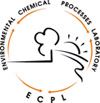This study aims to understand the atmospheric Fe and P cycles and quantify the dissolved Fe (Fe_d) and P (P_d) that is deposited into the global oceans. It focuses on the amounts carried by dust aerosol and their solubility changes due to mixing with anthropogenic sources. It also focuses on the sensitive marine ecosystem of the Mediterranean basin, the atmosphere of which is heavily affected by aerosols, due to its vicinity to Sahara to the South and the industrialized areas of continental Europe to the North.
The project is strongly multidisciplinary, relying on synergistic use of state-of-the art tools for laboratory, field, satellite imagery and modeling (global 3-d atmospheric chemistry transport, radiation and atmospheric deposition to the marine ecosystem) investigations, continuously interacting. It crosses the boundaries between atmospheric chemistry-transport, atmospheric radiation and ocean productivity.
The work has two facets: experimental with regional (Mediterranean) spatial focus and modeling with both global and regional foci. The study will first evaluate the impact of multiphase processes on natural aerosols on ozone, air quality, but also the aerosol levels and properties. Then the impact on radiation and on nutrient inputs and availability into the ocean that affect the marine primary productivity will be evaluated. The project aspires to support policy decisions definition for environmental preservation of the Earth.







